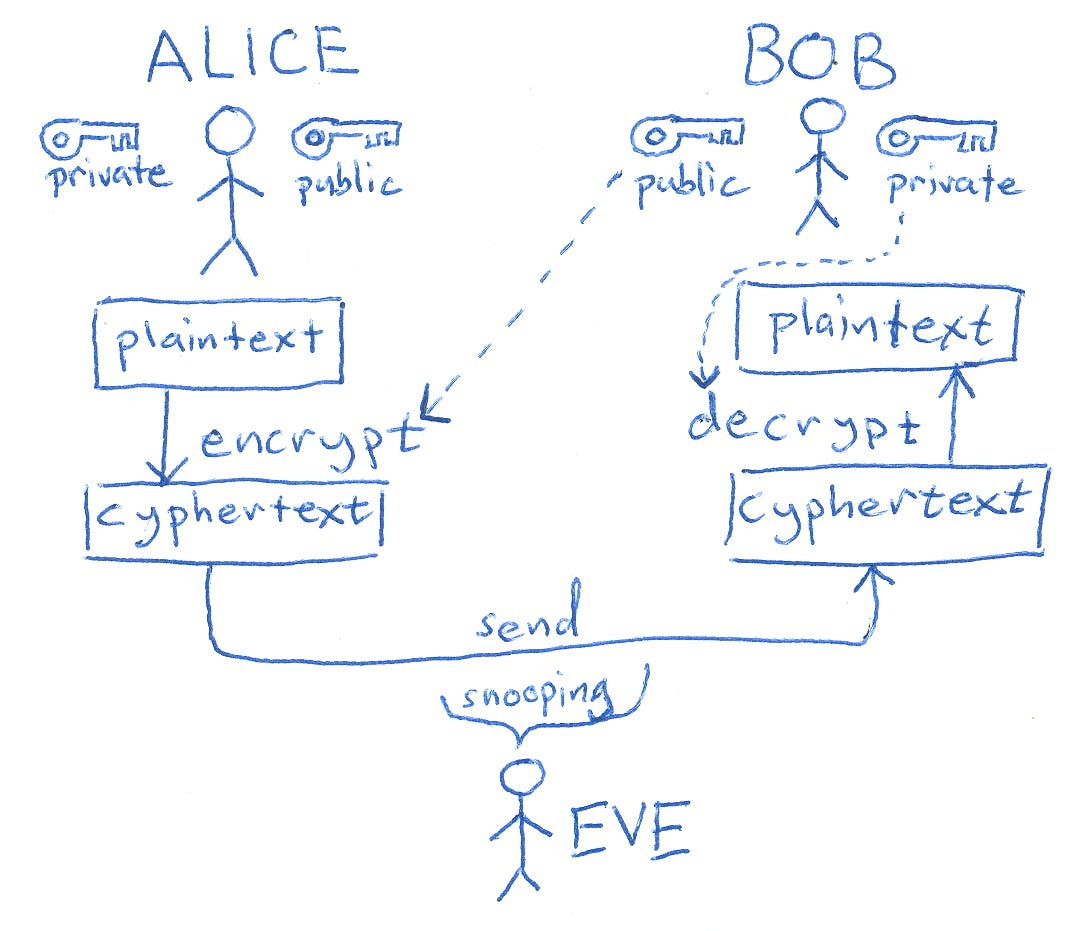When you hear the word crypto, the first thing that comes to mind is probably cryptocurrency. However, before Bitcoin, Ethereum, crypto was widely known to be an abbreviation for cryptography, the process of encrypting and decrypting information.
Cryptocurrencies, blockchains, and NFTs all begin and end with cryptography.
Cryptography is all about secure communication. In the context of blockchains, it allows anyone to send digital assets over the internet securely.
The word cryptography has its roots in the Greek language. Crypto comes from the Greek word kryptós (κρυπτός), and means "hidden" or "to hide," and graphy comes from the Greek word gráphein (γράφειν) means "to write."
Cryptography = Hidden Writing (🔒, ✍️ )
Cypherpunks were early champions of cryptography. The culture they created in the 1980s no doubt inspired the creation of CryptoPunks, the legendary NFT collection.

To hide information, you need to use a cipher - an algorithm (e.g., RSA) that converts plain text to Ciphertext - encrypted information that you can decrypt with a private password or, what we call in crypto, a private key.
There are many types of cryptography, but one of the most common forms on the internet and blockchains is public key cryptography. It is used on the Ethereum blockchain by digital wallets like MetaMask.
Public key cryptography provides authentication on blockchains.
Blockchain technology is p2p (peer to peer or person to person), and your ability to trust the information you send to a friend (BTC, ETH, NFTs) depends on cryptography. A network of computers solves mathematical formulas to confirm that a transaction happened and that data actually moved from point A to point B.
If I want to send a digital asset I own, like an NFT 🖼, to Bob, I would need to know his public key. You can think of the public key as a bank account number. The data would be encrypted using my private key and her public key.

Only Bob's private key could decrypt it; thus, he would own the NFT after blockchain nodes had validated the transaction.
The private key is similar to a bank account password. Something you would store safely and would never share or make public.
Satoshi created Bitcoin in reaction to the 2008 financial crisis. Frustrated with the financial sector, Satoshi Nakamoto created Bitcoin as an alternative monetary system.
Ethereum was created by a group of technologists, led by Vitalik Buterin, as a way to develop applications on top of blockchain technology. Specifically decentralized applications, open to anyone with an internet connection.
The Bitcoin and Ethereum blockchains have native cryptocurrencies used to pay for transactions. BTC and ETH respectively.
Both the Bitcoin and Ethereum blockchains are permissionless; all you need is a crypto wallet you can create an account on either blockchain. They are decentralized, meaning no single company, government, organization, or person controls them.
They provide digital sovereignty. You own your data. You own and control your money. No one can take ETH or BTC out of your digital wallet without permission.
With great power comes great responsibility, though. Governments do not insure accounts on Ethereum and Bitcoin. You're on your own if you get hacked or lose your private key (password).
What's most important to understand is that cryptography allows blockchains to secure applications, transactions, and accounts without a central authority.


